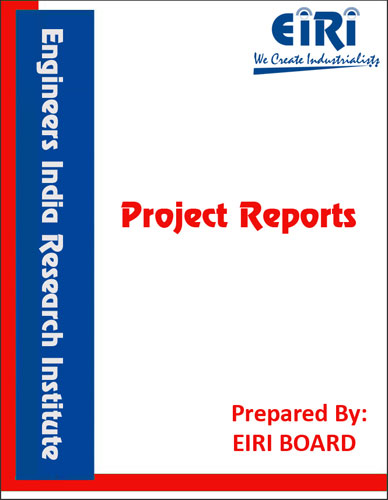The project report includes Present Market Position and Expected Future Demand, Market Size, Statistics, Trends, SWOT Analysis and Forecasts. Report provides a comprehensive analysis from industry covering detailed reporting and evaluates the position of the industry by providing insights to the SWOT analysis of the industry.
Water for injection by definition is water that is intended for use in the manufacture of parenteral (i.e. injectable) drugs whose solvent is water. The USP (United States Pharmacopeia) defines this as highly purified waters containing less than 10 CFU/100 ml of Aerobic bacteria. These waters should also have fewer than 500 ppb of total organic carbon, fewer than 0.25 EU/ml endotoxins, and a conductivity of less than 1.3uS/cm @ 25 C.
To begin, let’s start by looking at how Water for Injection is made. The USP allows WFI to be produced by one of two means; either distillation or reverse osmosis. Prior to making it to the still, however, supply water has to go through extensive pretreatment. Pretreatment usually includes various filtration steps, removal of chlorines through the use of activated carbon beds, and percolation of water through ion exchange resins to remove residual ionic compounds. What is the purpose of all this pretreatment? By pretreating the water, we effectively reduce the conductivity of the water, as well as the level of organic contaminants.
Once the water makes it through these pretreatment steps, it goes to the still. What happens in a WFI still? Distillation, of course. When water is distilled, it heated until it is a vapor, stripping the heavier ions, particulates, and endotoxins from the water. There are both single and multiple effect stills and which one is best for you is determined by how much WFI you are trying to generate. There are also vapor compression stills available that can make WFI. Regardless of what kind of still you are using, the basic process is the same- the water vapor is passed through a series of tubes and recondensed, resulting in WFI.
We get WFI from a process called reverse osmosis. In reverse osmosis, or RO, water is forced through a semi-permeable membrane and the pores in that membrane reject dissolved ions, salts, and organic compounds. This is filtration on a molecular and ionic level. The quality of water, temperature, PH, and flows rates are all critical in RO as the membranes used can foul easily. Reverse osmosis systems rely on booster pumps to increase pressure across membranes, storage tanks, and sophisticated controls for bulk WFI preparation. RO systems are capable of producing 600-50,000 gallons per day of WFI.
So what is done with WFI after it is produced to ensure the water stays at water for injections quality? It either needs to be used quickly (usually same day) or put in a state that allows it to maintain its efficacy. How do you make sure WFI stays as WFI? You need to minimize microbial growth. This is accomplished by maintaining it at high temperatures and keeping it in motion. Normally WFI is kept at 90 degrees C and recirculated through a distribution loop at a minimum velocity of 5 feet per second.
To ensure there is no contamination of entering or building up in the distribution system, the piping is normally highly polished, at least 20 Ra, often with electropolish. Any ventilation or vent filters are usually sterile membranes of at least 0.2 uM. Vent filter, commonly found on tanks, are often heat traced or steam jacketed. Why is that? Well, when WFI comes in from the still, it can be very hot. The heat can cause it to flash off and enter the filter. Once the steam makes contact with the vent filter, which if not heat traced will be cooler than the tank, the vapor will recondense and cause the vent filter to blind. When you go to pump that tank out, you would then pull a vacuum and could cause the tank to collapse.
Other common pieces of equipment used to ensure system integrity include double sheet shell and tube heat exchangers and weir type diaphragm valves. EPDM is probably the most common gasket material we see in a WFI system.
Because the conductivity of WFI is so low, it is considered “ion hungry”, ready to leach ions out of any surface it comes in contact with. That makes the water very abrasive. That means we use centrifugal pumps with single or double mechanical seals and hard seal faces, the most common and robust being either silicon carbide or tungsten carbide.
INTRODUCTION
WATER FOR INJECTION
USES
B.I.S. SPECIFICATION
WATER FOR INJECTION
MARKET SURVERY
PHARMA GIANTS RAISE THEIR R&D SPENDING
RAW MATERIALS FOR INJECTION WATER AMPOULES
PROCESS OF DISTILLATION
DIFFERENT METHOD FOR WATER FOR INJECTION
TECHNOLOGIES FOR WATER FOR INJECTION
MANUFACTURING PROCESS
PACKAGING OF WATER IN AMPOULES
PROCESS FLOW DIAGRAM
PROCESS IN DETAILS FOR WATER FOR INJECTION (WFI)
MULTI EFFECT STILL DIAGRAM
VAPOUR COMPRESSION STILL SCHEMATIC
PRODUCTION OF WATER FOR INJECTION FOR THE PHARMACEUTICAL
AND BIO-PHARMACEUTICALS
FORM-FILL-SEAL TECHNOLOGY & PROCESS
PLANT LAYOUT
SUPPLIERS OF RAW MATERIALS
SUPPLIERS OF PLANT & MACHINERY
APPENDIX – A:
1. COST OF PLANT ECONOMICS
2. LAND & BUILDING
3. PLANT AND MACHINERY
4. FIXED CAPITAL INVESTMENT
5. RAW MATERIAL
6. SALARY AND WAGES
7. UTILITIES AND OVERHEADS
8. TOTAL WORKING CAPITAL
9. COST OF PRODUCTION
10. PROFITABILITY ANALYSIS
11. BREAK EVEN POINT
12. RESOURCES OF FINANCE
13. INTEREST CHART
14. DEPRECIATION CHART
15. CASH FLOW STATEMENT
16. PROJECTED BALANCE SHEET



